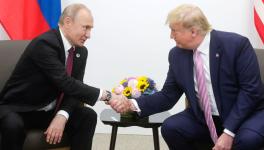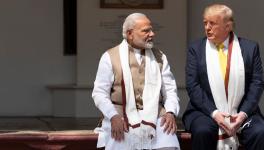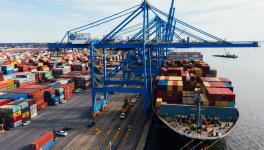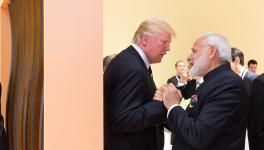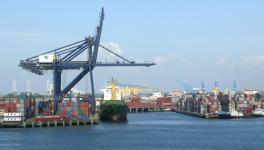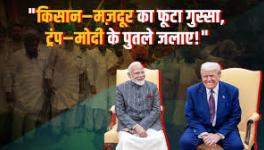India Has Many Tools to Withstand US Tariffs
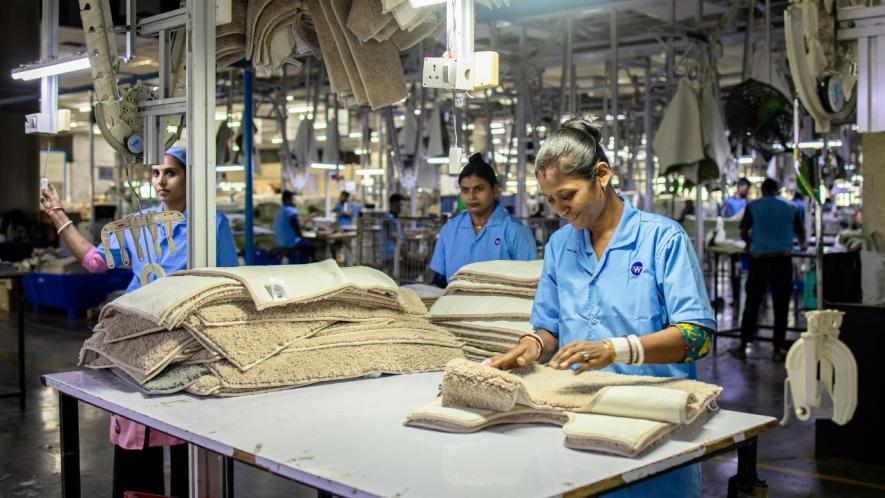
Representational Image. Image Courtesy: Pexels
When Donald Trump slapped 50% tariffs on Indian exports, it was not just another trade quarrel. It was a blunt display of how the United States continues to use its strategic heft as a weapon of coercion. The pretext was India’s import of discounted Russian oil, but the real message was clear: Washington will punish any deviation from its strategic priorities.
India’s shipments of textiles, gems and jewellery, footwear, and leather goods, worth nearly $80 billion annually, now face crippling tariffs in one of their biggest markets. Behind these export figures lie millions of workers, weavers in Tiruppur, artisans in Surat, migrant labourers in Agra, who suddenly find their livelihoods under threat.
For Micro, Small and Medium Enterprises (MSMEs), where these workers are employed, tariffs mean fewer orders, shuttered workshops, and rising debt. And for the working poor, whose survival already depends on fragile incomes and cheap essentials, tariffs can mean inflation, hunger, and deeper insecurity.
Imperial Discipline Through Trade
This episode must be seen for what it is: a reminder of the coercive role of US imperial power. Washington does not merely defend its own economy (actually big business); it polices the choices of others. By weaponising tariffs, sanctions, and above all the dollar’s status as the international reserve currency, the US seeks to ensure that the strategic autonomy of developing countries remains attenuated.
India is not alone in facing this coercion. China has long been targeted through tariffs and restrictions on technology. Cuba, Iran, Venezuela, and Russia face large-scale sanctions. Even “allies” in Europe have not been spared when they consider exercising even a sliver of strategic autonomy.
Kalecki’s Warning
The Marxist economist Michał Kalecki argued that the economic trajectory in the capitalist system is a complex interplay between investment, employment, demand and class conflict. This complex interplay in the capitalist framework tends to generate unemployment, inflation, inequality and political instability.
Tariffs imposed by the US exacerbate these crisis tendencies. If exports collapse, workers lose jobs. If imports of essentials are disrupted, prices rise. And if governments respond with strategic timidity toward the US, the ill-effects of abandoning an independent foreign policy will come to the fore.
Read Also: An Out of Sight Ramification of Trump’s Tariffs
Domestic elites rarely bear the adverse impacts of such shocks; they shift the burden onto workers and the poor. Unless governments intervene consciously, external pressures translate into rising domestic inequality which will constrain demand and future growth.
The US tariffs are also a test of whether the government of India will take any steps to defend its working people or (what has been the case, especially with the current Indian government) stand by corporate elites.
Export Dependence: Tackling Vulnerability
India today sends nearly 18% of its merchandise exports to the US. This dependence is the product of decades of neo-liberal policies that tethered India’s economic trajectory to the developed countries. Such over-reliance makes India uniquely vulnerable to tariff shocks emanating from the US.
Therefore, diversification is not an option, it is a necessity. Strengthening trade with BRICS+ countries, expanding ties with Africa and Latin America, and settling more trade in local currencies are steps toward building resilience. Every deal with Russia, China or Brazil, every trade corridor that bypasses the dollar, chips away at Washington’s ability to exert coercion on the Global South.
Who Pays the Price?
As previously argued, it is the workers who are paying the price of the US trade war on India. The textile sector, employing over 45 million people, is already reeling under reduced orders. Gems and jewellery, which support another five million livelihoods, face cancelled contracts. Small footwear units in Agra and Kanpur are cutting shifts. Migrant labourers, who left villages for factory jobs, now face the spectre of being pushed back into precarious informal work or being unemployed.
Yet, at the same time, India’s largest corporations in pharmaceuticals, infotech, and smartphones continue to record healthy export margins. Why should workers in labour-intensive industries shoulder the burden while big corporates remain insulated?
A redistributive strategy is possible. Modest export duties on high-margin sectors dominated by corporate giants could finance subsidies for vulnerable industries. This use of the fiscal tool of cross-subsidies would seek to preserve employment and protect wage goods. The principal obstacle to such a policy is not economic feasibility but political opposition. India’s elites prefer to guard their profits, even at the cost of workers’ livelihoods.
Calibrated Retaliation
There is also the question of trade retaliation. India has the option of increasing tariffs on US agricultural products, such as almonds, apples, and pulses. Such a move would hurt American agribusiness, a lobby with considerable influence in Washington. Calibrated retaliatory trade policy measures on US firms in insurance and banking could add further pressure on the US.
But trade retaliation must be planned and, wherever possible, based on multilateral organisations such as BRICS+. High retaliatory tariffs which are not based on a coherent plan of diversifying sources of imports risk pushing up domestic prices, especially of essentials. “Tightening belts” is always demanded of workers by neo-liberal governments, never of elites. A democratic strategy must protect the working poor from policy shocks while raising the costs of coercion for the US.
Oil and Strategic Advantage
Ironically, the very oil trade that ostensibly provoked the ire of the US can fund India’s resilience in facing up to this coercion. By refining discounted Russian crude, Indian companies (especially private corporates) appropriate large profit margins. A modest export duty on refined products could create an Export Resilience Fund, generating ample resources annually. These resources could directly support labour-intensive exporters, finance wage subsidies, and thereby preserve millions of jobs.
Renewing India-China Relations
No serious strategy to establish Indian resilience to US coercion can ignore relations with China. For India’s manufacturing base, integration into Asian supply chains is a necessary step to enhance resilience. The sectors that could be part of this integration include electronics, renewable energy, pharmaceuticals, and machinery. Joint ventures in greenfield foreign direct investment ventures, especially through India’s public sector, could secure technology transfer while maintaining sovereignty.
Beyond the Dollar Trap
As long as global trade and finance remains dollar-denominated, the US retains the ability to exercise strategic coercion. Tariffs are only one weapon in this arsenal; the more significant tool for coercion is the international reserve currency status of the dollar.
India must expand non-dollar-based trade settlements, support the development of a BRICS payments system, and diversify its foreign exchange reserves into non-dollar assets, including Chinese renminbi and gold. These measures will not be successful without capital controls. The institution of these moves toward de-dollarisation will expand India’s strategic autonomy and reduce the scope for US strategic coercion.
Solidarity as Strategy
This struggle against US coercion is not India’s alone. Countries across the Global South face the same imperial diktats, tariffs, unilateral sanctions besides non-economic coercion. The answer lies in building collective resilience, as previously indicated.
BRICS+ offers one such platform, but the project to usher in authentic multipolarity must include coordinated trade agreements, shared investment funds (through institutions such as the New Development Bank and the Asian Infrastructure Investment Bank) and mutual cooperation in resisting strategic coercion.
From Tariffs to Transformation
Development strategies, the world over, always run up against entrenched corporate interests. External strategic coercion engenders internal inequality. Without conscious State intervention that is organised by the democratic movement, the working people will always bear any change. That is why India’s response to US strategic coercion must combine redistribution at home with solidarity abroad.
Resisting tariffs is not merely about defending exports. It is about defending employment, food sovereignty, and strategic autonomy. The Trump tariffs have revealed the fragility of India’s export dependence, the brutality of strategic coercion, and the vulnerability of the working people. But they also open space for political transformation.
India has tools such as diversification of markets, redistributive subsidies, calibrated retaliation, oil export duties to fund resilience, integration into Asian supply chains, and steps toward de-dollarisation. What is needed is political agency to engender this democratic transformation.
Shirin Akhter is Associate Professor at Zakir Husain Delhi College, University of Delhi. C Saratchand is Professor, Department of Economics, Satyawati College, University of Delhi. The views are personal.
Get the latest reports & analysis with people's perspective on Protests, movements & deep analytical videos, discussions of the current affairs in your Telegram app. Subscribe to NewsClick's Telegram channel & get Real-Time updates on stories, as they get published on our website.









